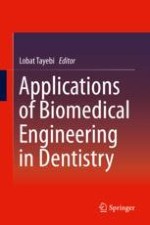2020 | OriginalPaper | Buchkapitel
2. Biomedical Materials in Dentistry
verfasst von : Fahimeh Sadat Tabatabaei, Regine Torres, Lobat Tayebi
Erschienen in: Applications of Biomedical Engineering in Dentistry
Aktivieren Sie unsere intelligente Suche, um passende Fachinhalte oder Patente zu finden.
Wählen Sie Textabschnitte aus um mit Künstlicher Intelligenz passenden Patente zu finden. powered by
Markieren Sie Textabschnitte, um KI-gestützt weitere passende Inhalte zu finden. powered by
